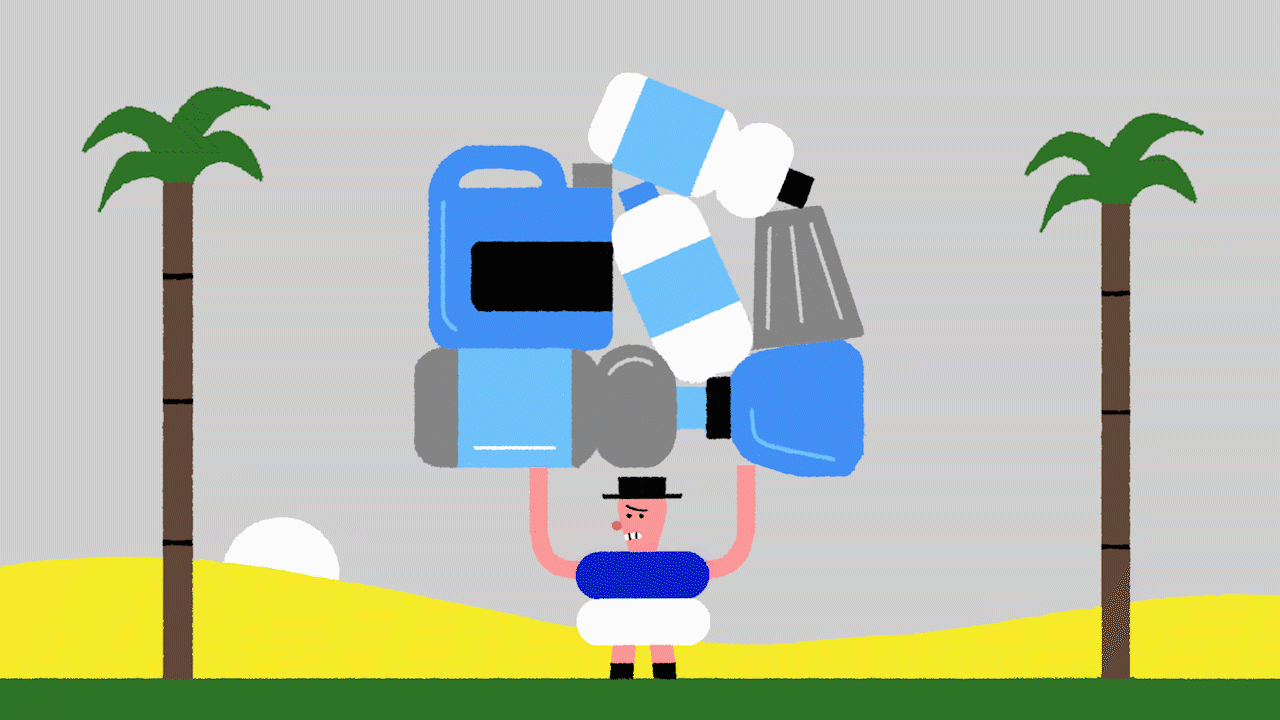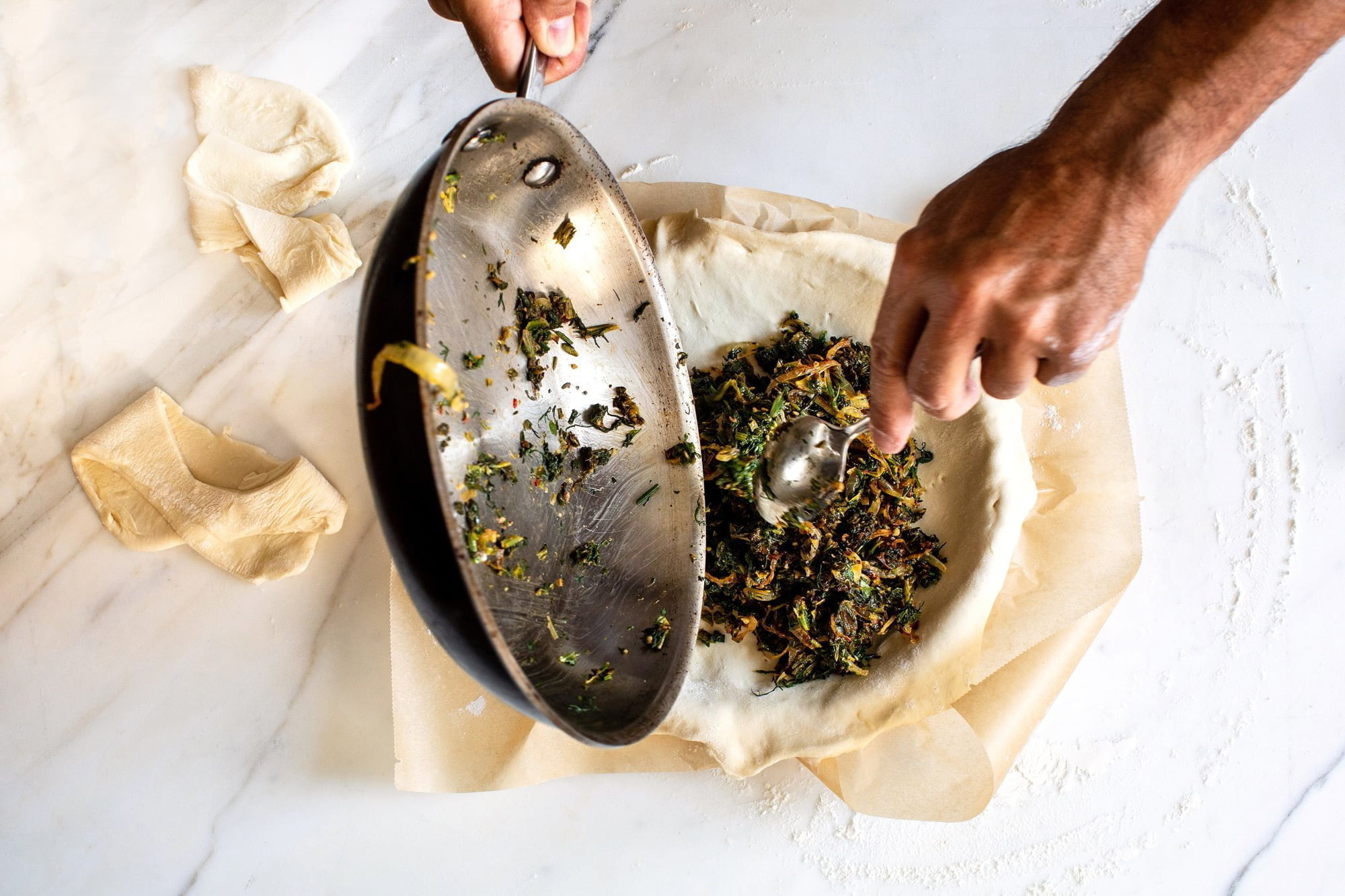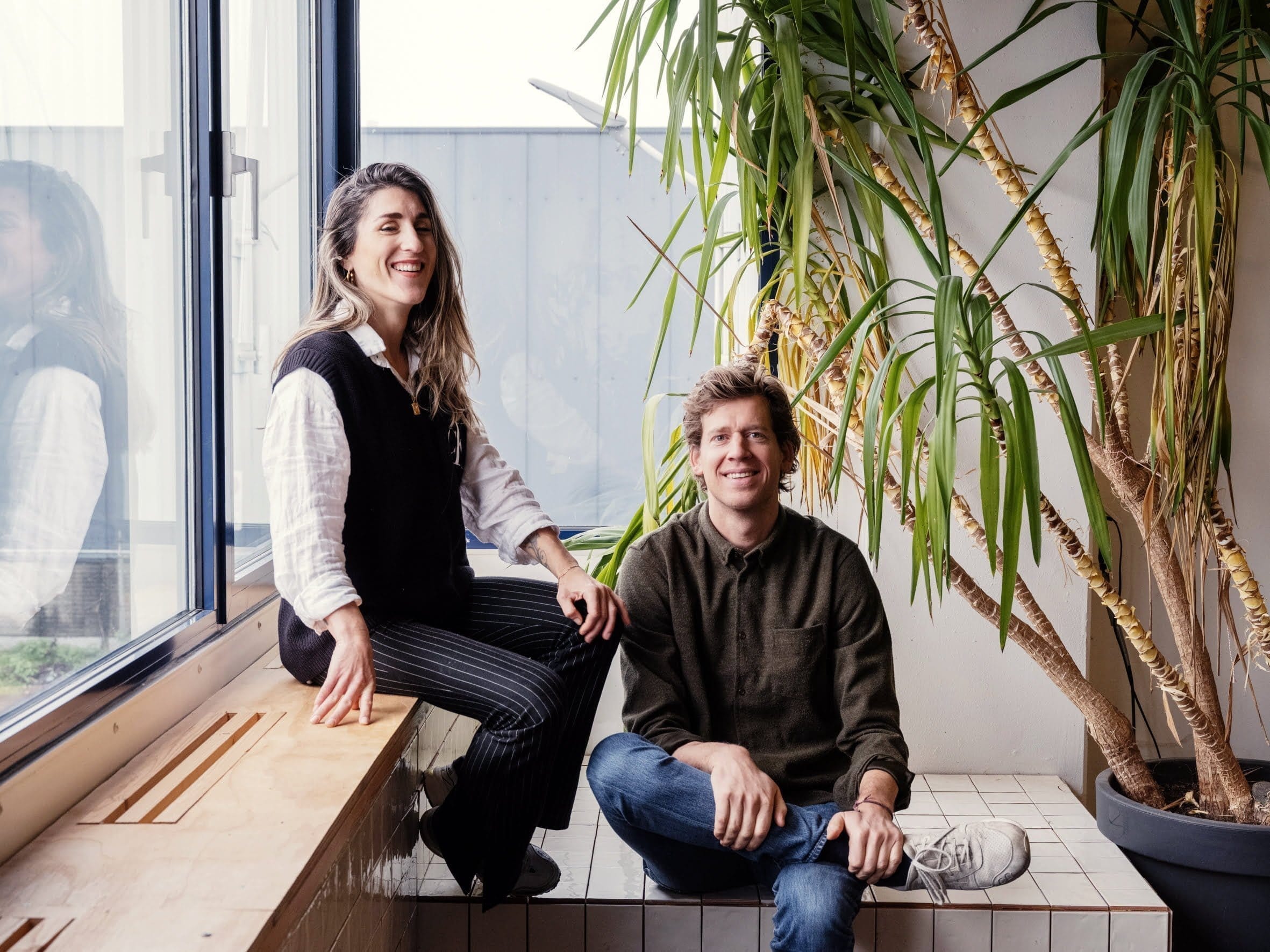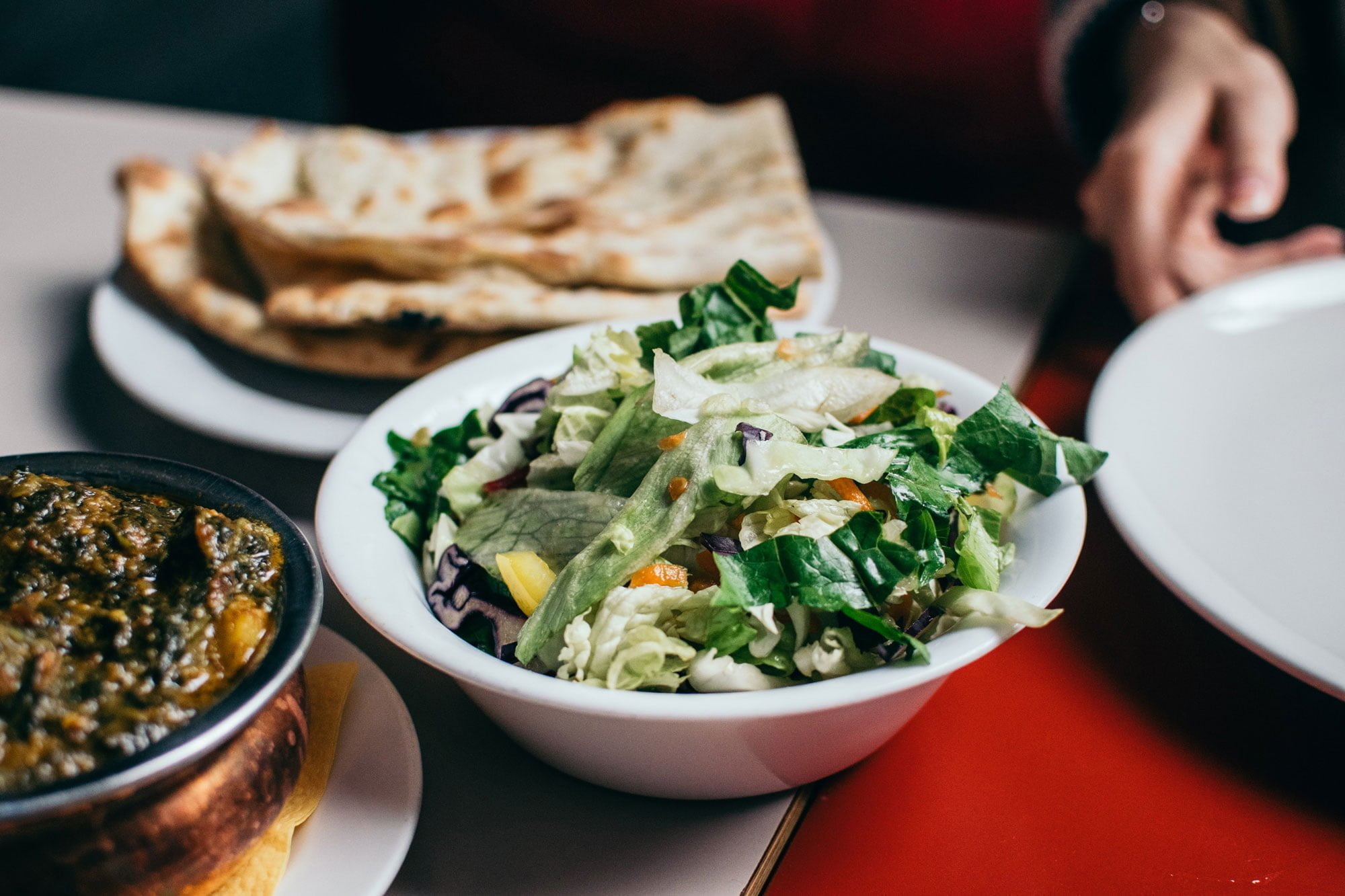We all know that eating less meat is an easy win when it comes to minimising our environmental impact. And while meat-free Mondays are already a fantastic first step, what’s it like to let go of your inner carnivore entirely? Curious to find out, 5 challenged journalist Richard Walker to do just that. Here’s his diary.
Twenty years ago when someone said they were vegan it meant they’d gone weird. Only one step removed from fruitarians, who wait for food to leave its bush or tree of its own free will. It all seemed laughable. Not so today. Vegan junk food is every bit as celebratory, decadent and greasy as traditional junk food. And there are dozens of highly rated vegan dining establishments in which to put on weight where I live in Amsterdam.
Eating a strict vegan diet used to mean spending a chunk of your income in expensive “health food” shops, which in the ‘90s were mostly filled with small plastic bottles of food supplements and bags of over-priced figs. Now, it’s commonplace for ordinary supermarkets to stock an increasingly wide range of vegan products.
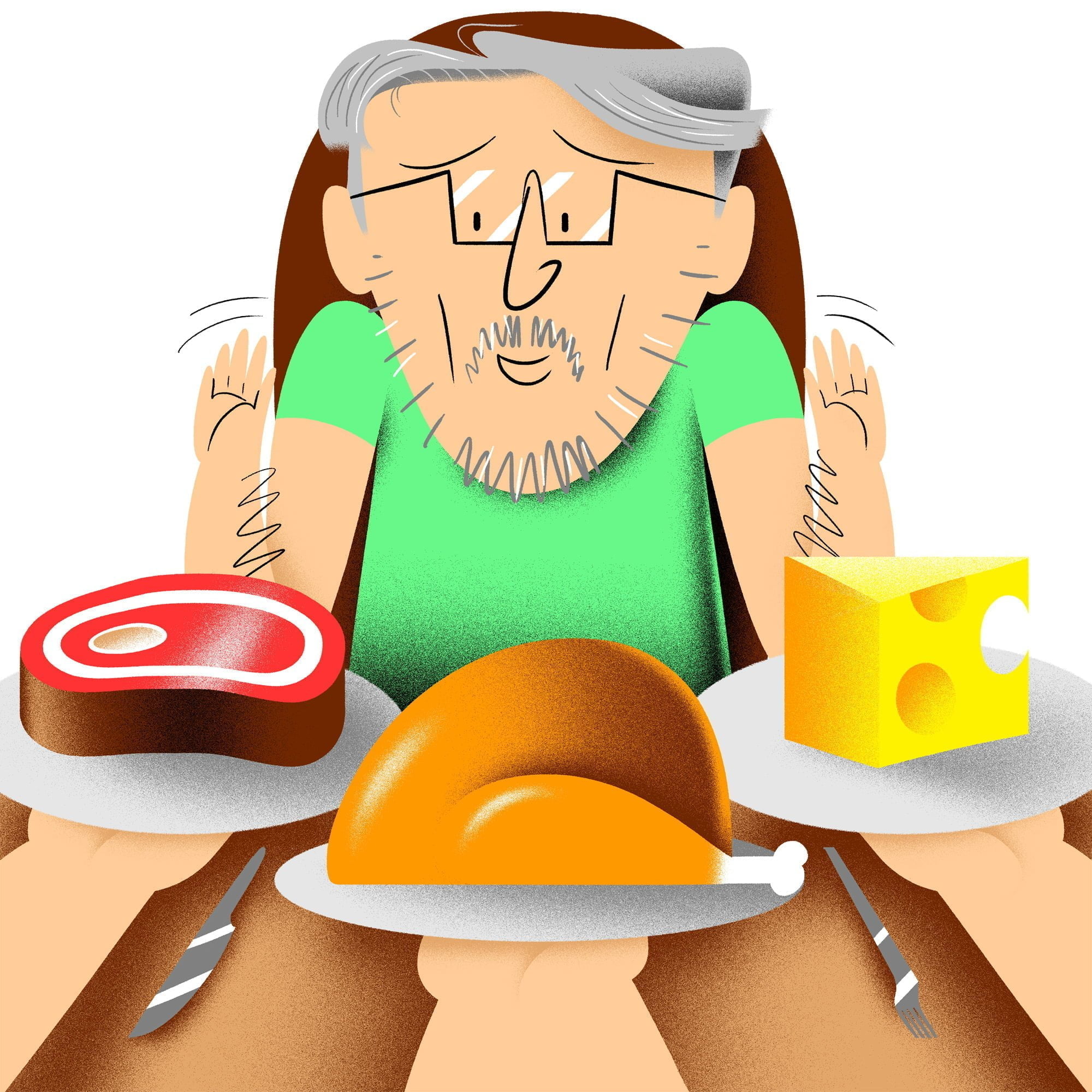
Going vegan means to refuse foods and goods containing (or even making use of) animal products. Motives range from personal health and the ethical treatment of animals, to livestock farming’s environmental impact, which according to the UN’s Food and Agriculture Organisation, is huge. The animals we farm produce 18% of all human-made greenhouse gases, which is more than all the transport combustion engines in the world put together.
It’s a time commitment, I’m told. But I don’t have time, so for the purposes of this one week exercise, I’ve decided to interpret the term strictly, although I’m not taking it to the extremes that some do, (hardcore vegans won’t drive through towns with “ham” in the name, says UK comedian Bill Bailey).
“Some suggest easing into veganism by replacing a few things at a time, but I’m in a hurry, I’m going cold tofu”
Richard Walker
Personally, the more I read about animal consciousness and the likelihood of many animals’ large capacity for suffering, the more I worry about my contributions to that suffering as a consumer. My wife has been reading a book called “Are we smart enough to know how smart animals are?”, and maybe I’m imagining it but I’m sure that book is following me around the house.
DAY 1 – Fake beef, veggie cheese and beer
Some experts suggest easing into veganism by replacing a few things at a time so that you don’t notice. But I’m in a hurry, I’m going cold tofu.
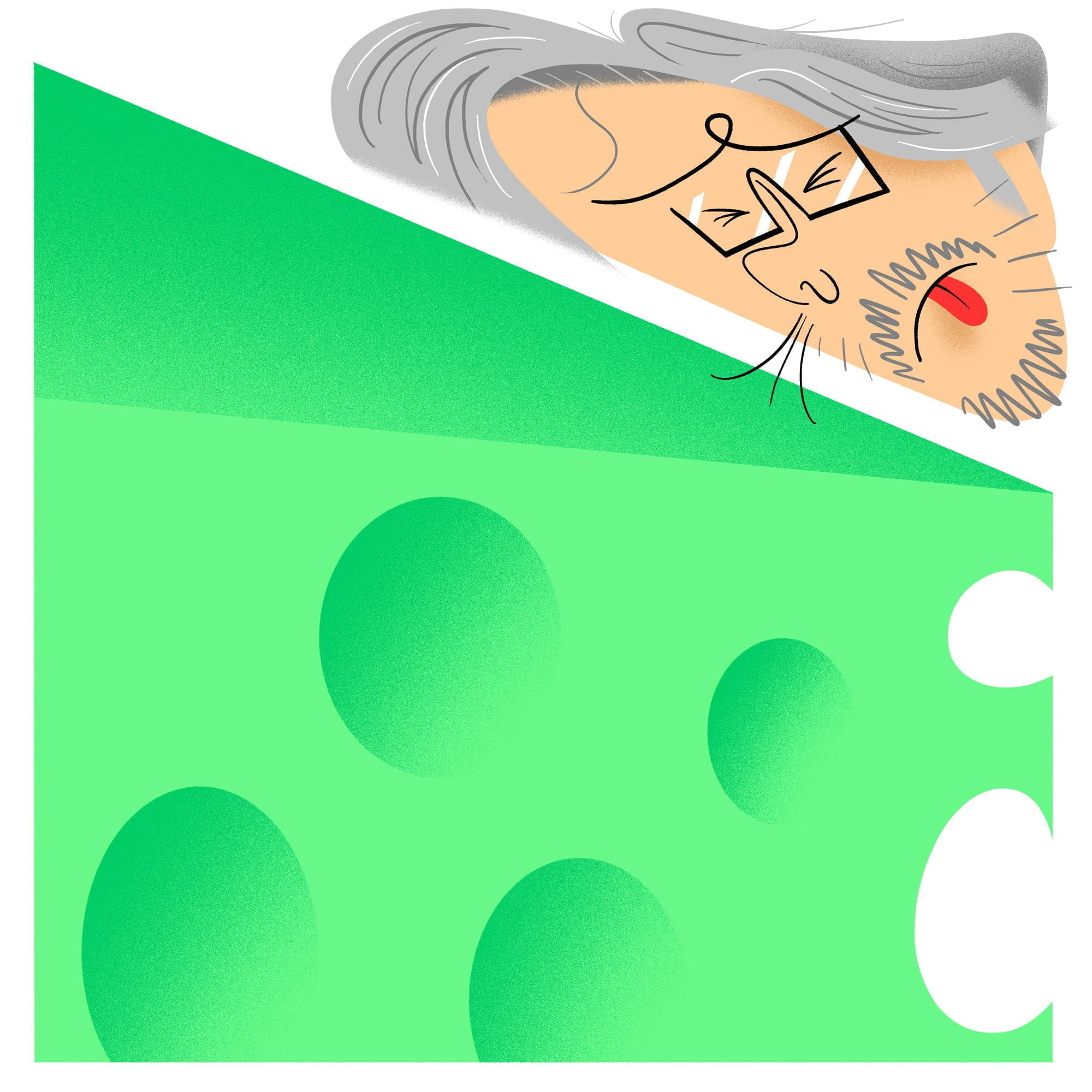
My first food plunge is a big win because fake beef is great. Vegans are good for the environment since beef is by far the worst meat for the climate, per kilo produced, due to cattle-related carbon emissions and deforestation. Taste-wise, soya based mince takes on flavours much more quickly than real beef-mince. So you don’t need to marinade it. Bolognese and chilli are better than ever as the flavours all pop after just 20 minutes of simmering. One downside though, my already close relationship with flatulence, explodes. Cow flatus (farts) and burps account for around 240 cubic litres of methane per cow, per day. And although humans produce just 2 cubic litres per day for those at the upper end of the spectrum, I must produce double that after eating soya. Do vegan flatus smell better? The three vegans I know answered: “Yes”; “No”; and “Mine are shaped by beer, not food.”
“What to do about eggs? I love eggs. I eat two every morning without fail”
Richard Walker
By the way, despite being just hops, yeast and sugar, beer isn’t always vegan. Many brewers and wine-makers use animal-derived clarifying products like gelatine. I ask the barman in my local bar if the beer he just poured me is vegan-friendly and he says “Just drink it, you’ll worry less afterwards”. To his irritation, we then check for vegan labelling on some other drinks – apple juice, cider (often not vegan due to use of fish bladders to clarify), and cocktails (some rely on milk and eggs). Once you start looking, it’s a can of worms (not vegan).
But, back to food. Delicious bolognese with fake beef’s only downside comes when you insist on vegan Parmesan. The vegan cheese debate rages on, and the low opinion in which vegan cheese is held is the most often cited reason people give for not contemplating going vegan. On a pizza I think it’s more about the texture of mozzarella cheese and the vegan substitute achieves this quite well. The vegan parmesan I tried tasted like sunflower seeds marinated in a sweaty sock. And my local supermarket’s vegan cheddar is truly awful, with the taste and texture of a wet beer-mat at the seaside. It’s enough to make me lose my tempeh.
So, what to do about eggs? I love eggs. I eat two every morning without fail. Fried, boiled or poached, on wholewheat toast. It’s my favourite meal of the day. Scrambled eggs don’t do it for me, and that’s all you can do with powdered egg, a bleak war-time memory for my grandmother. I cannot go a week without eggs, so I try a recipe for fried vegan eggs (mashed squash for the yolks; tofu, flour and coconut milk for the whites). It was quite fun to go through the many steps but although the resulting “eggs” look kind of real from a distance, up close they’re about as real as Lenin’s embalmed remains in his Moscow mausoleum, and taste about as good too.
The environmental impact of egg production depends on how they’re farmed. Properly pastured hens contribute to healthy soil through their manure. But too many hens means the soil can’t absorb all the manure’s nitrogen and phosphorus which then contaminate drinking water and poison aquatic species.
“My Brexit-voting, carnivore, wind-turbine-denier parents are here for the weekend. They hand me a meaty cookbook”
Richard Walker
All of which begs the question, what’s wrong with eating eggs from well treated chickens? Sure, not all free range eggs come from happy chickens, but for me it’s worth seeking out a verifiably ethical source. An acquaintance keeps a few chickens on his allotment just outside of the city. They range freely, and I’ve just struck an eggsclusive deal for their output. Which I will begin eating in earnest once my vegan week is over.
DAY 2 – The Veganista
Central Amsterdam, being a most liberal urban space, is not the place to find opposition to lifestyle choices. Fortunately, my Brexit-voting, carnivore, wind-turbine-denier parents are here for the weekend. They hand me a pointed birthday gift – a meaty cookbook by the food critic Jonathan Meades. It’s packed with bullying advice to keep topping up your meat-stock broth with leftover gizzards and offal, and the book leaves a meaty waft in your nose long after you’ve put it down. Printed at the bottom of every page are the words “vegetarianism is curable”. When I inform them that I’ve gone vegan, my father pulls a face like someone just farted, which possibly they have.

My daughter has a vegan friend aged 15. She recently “came out” as vegan to her parents who eat meat like it’s their civic duty. To them, she’s going through a series of teenage mini-crises and veganism is merely the fad that came after her adoption of an injured squirrel and before she enshrined her room to Indian Mysticism.
It surprises me how middle aged and older people judge my vegan move, quick to assume I’m telling them how to live rather than making a personal choice; and how teens and twenty-somethings don’t even blink at the news. One older friend starts calling me “The Veganista”. My mother says I’m “hugging trees and eating acorns”. The news that I’m vegan makes others defensive. As if I’ve questioned their entire belief system and moved to the moral high ground.
DAY 3 – Dinner party
A dinner party looms. I could have just explained to the hosts that I was writing a diary on going vegan and would they mind adapting the meal. That way we could all take it not too seriously. Instead, I decide not to tell them about the diary, just that I’m now vegan and not to go to any trouble. To see what trouble they’d go to.
“Eyebrows move further up foreheads. I’m on my ninth breadstick and the hummus has run out”
Richard Walker
It’s a pity there isn’t yet a tool on the market for measuring the slight distance eyebrows go up the forehead of a person who no longer feels they understand who you are. Dinner arrives. A pasta dish which, after I inquire, contains a chicken stock cube. I apologise that I can’t eat it. Eyebrows move further up foreheads. I’m on my ninth breadstick and the hummus has run out. I ate all the hummus. Even though it’s the only vegan thing on the table, no one thinks this is ok. They’ve lost their sense of hummus.
One guest asks me if I’d eat meat grown in a lab? If not he says, without waiting for my answer, it begs the question – what is the meaning of consciousness in defining what we consider to be the use and abuse of animals? Perhaps this is at the heart of the vegan question for ethical vegans – the degree to which animals suffer for our benefit. Studies show animals like pigs have deep emotional connections to other pigs and suffer intensely when deprived of those connections. The dinner party host tries to lighten the mood by switching the subject to football. I point out that FC Barcelona’s Sergio Aguero is a vegan. No one cares.
Arriving home hungry, I eat the rest of the foul vegan cheddar. But wash away the taste with the delicious vegan brownies I baked earlier for my daughter. They’re indistinguishable from brownies made with butter, and redeem this difficult day.
DAY 4 – Off to the shops
I used to work in a newsroom full of embittered, cynical journalists. The term we used for vegans and other people with a keen conscience was “knitted shoe”. Today I’m literally shopping for knitted shoes, aka vegan shoes. I need a new pair of winter shoes/boots and decide this is the time to buy them.

While some vegan cheeses can make your eyes water, the cost of vegan shoes definitely will. Shopping the length of Amsterdam, they’re typically €200 and I find just one pair under €100 – a brand called Gouache, which will appeal to youngsters recreating that platform ‘70s glam look. But it’s not my thing. Online I find a pair of good looking boots for €130 from Will’s Vegan Store. Good enough, just hope my feet don’t smell like the vegan cheddar after wearing them.
Is veganism expensive? Queueing in front of me at my local supermarket a young professional buys a single bag of goods, all of it plant-based – bars of chocolate, soy yoghurt, oat milk, fruit and vegetables. It costs €65. Which seems a lot. But there are a huge number of websites with tasty-looking recipe that don’t have to break the bank. And recent research shows that cutting out meat could actually slash up to a third off your food bill.
DAY 5 – The end?
Animal products are in almost everything. Animal rights group Peta has a helpful list, yet avoiding everything on it would be a full-time job in itself. What to avoid comes down to how much I need it, what the synthetic alternatives are, and whether those conflict with other ethics, (for example, a number of Peta’s non-animal alternatives are made from crude oil by-products).
“Just remember that non-vegans are often totally unethical about eating your nice vegan stuff”
Richard Walker
Going vegan is easier than you think, in terms of shopping and dining, once you get used to the alternatives. And if you’re worried about missing that special occasion meat feast, there are some incredibly good vegan versions of things like roast ham, here presented by Gaz Oakley, the non-meat substitute for Jamie Oliver. It took me ages to make but it was worth it.
That major stumbling block to trying veganism, evil vegan cheese, will soon be overcome – I just discovered this and it’s as good as any dairy-based herby Italian soft cheese. Just remember that non-vegans are often totally unethical about eating your nice vegan stuff.

The biggest challenge is how to deal with other people’s changes in attitude, how to turn the other soya-based cheek. Over time they will adjust, and appreciate that you’re not going vegan just to make them feel bad. In the long run, it may even inspire them to try it.
Veganism is getting easier all the time. Which is great news for the environment as ever greater numbers of people switch to vegan habits. And while I’ve kicked vegan eggs into the long grass, soya-based meat substitutes have now completely replaced beef, pork and chicken in my diet. I won’t ever label myself vegan again, but almost all of my diet and general consumption will be exactly that. The way of a quiet vegan warrior.
First steps
Curious about a plant-based diet? Harvard Medical School’s health blog has a handy overview of what plant-based eating means and why it’s worth trying, including eight ways to get started.
Read moreFind platefuls of vegan and veggie inspiration and recipes on Love and Lemons, a scrumptious food blog that lets you search by meal type or ingredients.
Read moreJoin 5 and chef Abi Fox for an online interactive cooking class that supports your health and the earth on Sunday 23 January. It’s free!
Register now
